Description
Genus: Boletus
Species: edulis
- Species 2: “Chippewaensis”
- Species 3: “Rubriceps”
- Species 4: “Grandedulis”
- Species 5: “Edulis var. clavipes”
Common Name: “King Bolete”
- Common Name 2: “Porcini”
- Common Name 3: “Cepe”
- Common Name 4: “Steinpilz”
- Common Name 5: “Barstools”
- Common Name 6: “Rocky Mountain Reds”
- Common Name 7: “The best damned eating mushroom in the world.”
Tells: Buff stem w/white netting. Babies have stuffed pores. Cap colors vary hugely. White pores age to yellow, & darken w/old age. Likes conifers. Specific tree associates vary with region.
Other Information:
- Cap colors center around tan but can be chestnut brown, stem-color buff, bright yellow, yellow with red streaks, orange, brick red, or scarlet red. It tends to be consistent within a region (red in the rocky mountains and yellow with red streaks in the Northeast, to use just two examples), but whole genome testing proves it is all one species.
- The pore layer starts out stuffed with white “cotton,” ages into white pores as the stuffing falls out, and then ages through yellow into a local “old age” shade that varies with region (greenish olive in the Northeast, cinnamon/brick in California, etc.)
- The pores do not change color when bruised, except for mild and occasional hints of pink or brown.
- Stem is solid and usually gets more bulbous as you go down.
- White netting gets more abundant the closer you get to the pores. The amount of netting can vary significantly from individual to individual. Be aware that the white netting can occasionally age toward brownish, and is sometimes stained by dirt, spores, or other environmental factors.
- The overall mushroom can be HUGE, up to 15″ across with single specimens as heavy as 5-7 lbs. on the extreme end. The California version are often called “Barstools!”
- The flesh is white and will not bruise any particular color except for mild and occasional hints of pink or blue, especially near the tubes.
- B. edulis strongly favors conifers, but the preferred host varies a lot from region to region. Northeastern finds heavily favor Norway Spruce, but that is not exclusive. Most California finds are made under Bishops or Monterrey Pine, but have also been found with Coast Live Oak (eliminating the argument for conifers only). Rocky Mountains finds also favor spruce, but are common under pine and fir as well.
Note: If you’re worried that you might have found a False King Bolete (B. huronensis), click here for a handy table of differences.
Edibility: Choice. To say the least.
Science Notes: Whole genome testing has incontrovertibly proved that B. edulis is a transcontinental species ranging from Alaska south through California, and then East across North America, over the Atlantic into Western Europe, and on east at least to the Ural Mountains. The mushroom’s appearance changes drastically from region to region, which is one reason why so many regional species had been accepted over the last century or two. Indeed, the differences can be as extreme as those between Mastiffs, Beagles, Akitas, Whippets, Great Danes, Wolves, and Chihuahuas. But just like Canis lupus familiaris it is all one species at the genetic level. The result has been the so-called Great Merger of California’s edulis var. grandedulis, the Rocky Mountains rubriceps, and the two Northeastern species names chippewaensis and edulis var. clavipies, into Linnaeus’ original European species name edulis. For more information see this article [insert link] and this video talk given by Dr. Bryn Dentinger.
CHEMICAL TESTS:
- NH4OH (Ammonia): Cap flesh turns pink or red. Cap surface reaction is variable.
- KOH: Cap flesh turns brownish or brownish orange.
- FeSO4 (Iron Salts): Variable.
Links:
 |
568 |  |
301 |  |
108 |  |
101 |

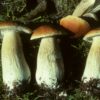
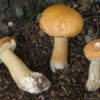
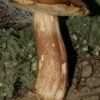
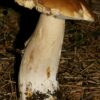
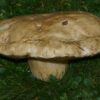
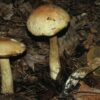
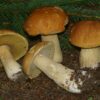
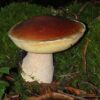
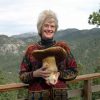
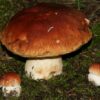
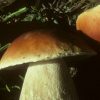
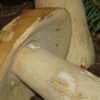
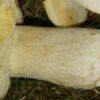
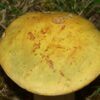
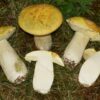
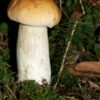
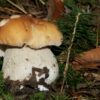
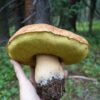
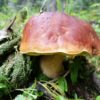
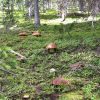
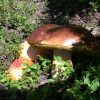
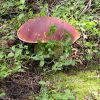
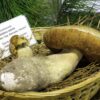
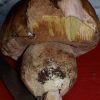
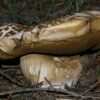
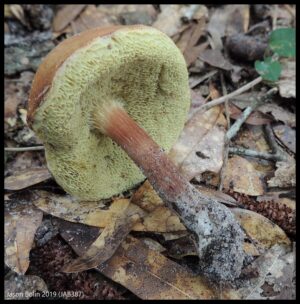
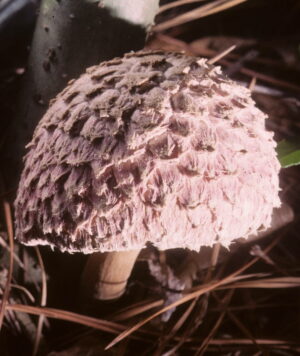
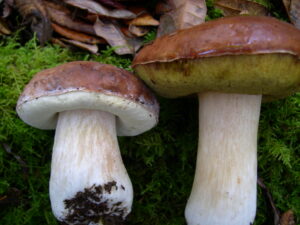
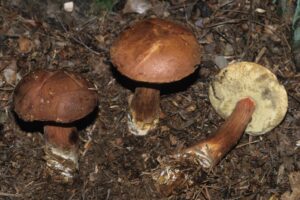
Got something to discuss?
What season do these grow?
It depends on where you are. People also believe that what people call “edulis” actually includes many lookalikes that grow at different times. In Pittsburgh, e.g., we find one version in May (very early) and another in September/October (very late). Both grow under Norway Spruce. Is it a double fruiting or two parallel species? The DNA work has not been done to confirm it one way or another.